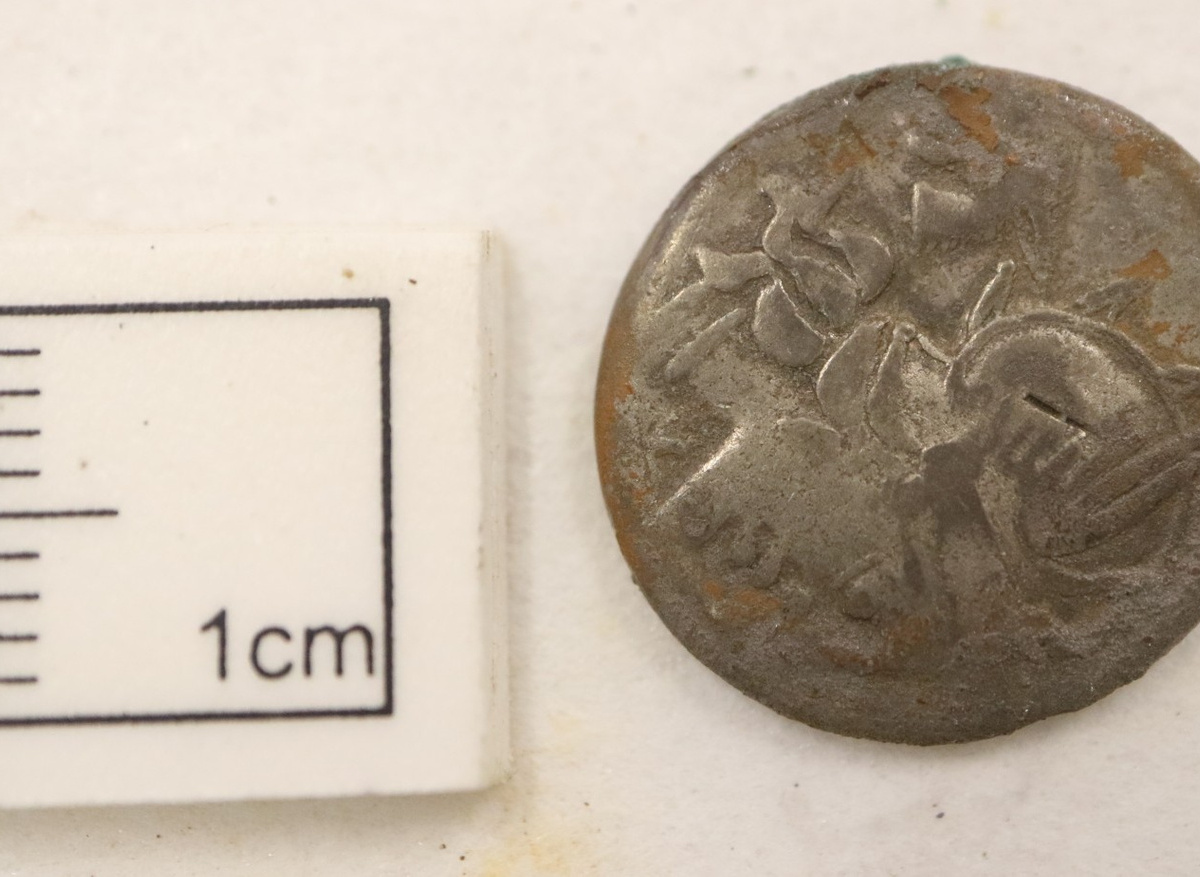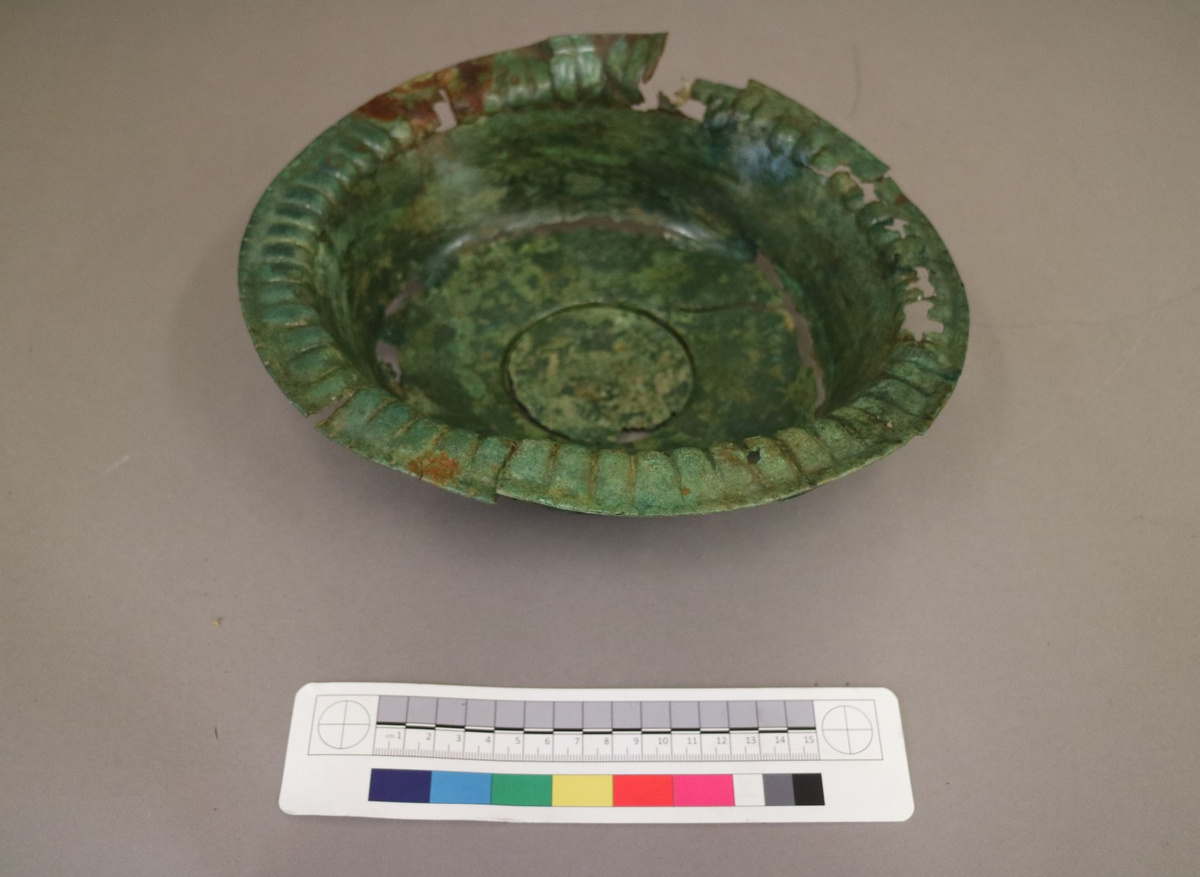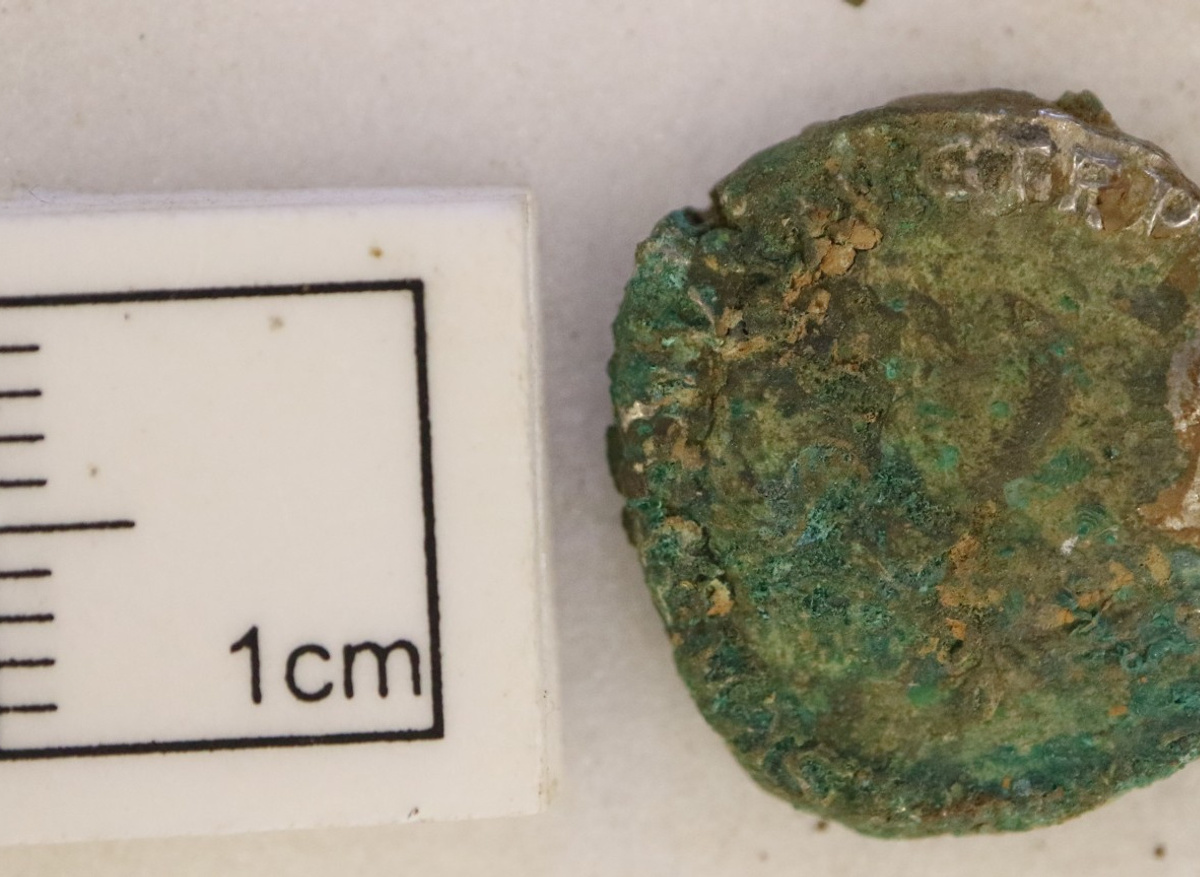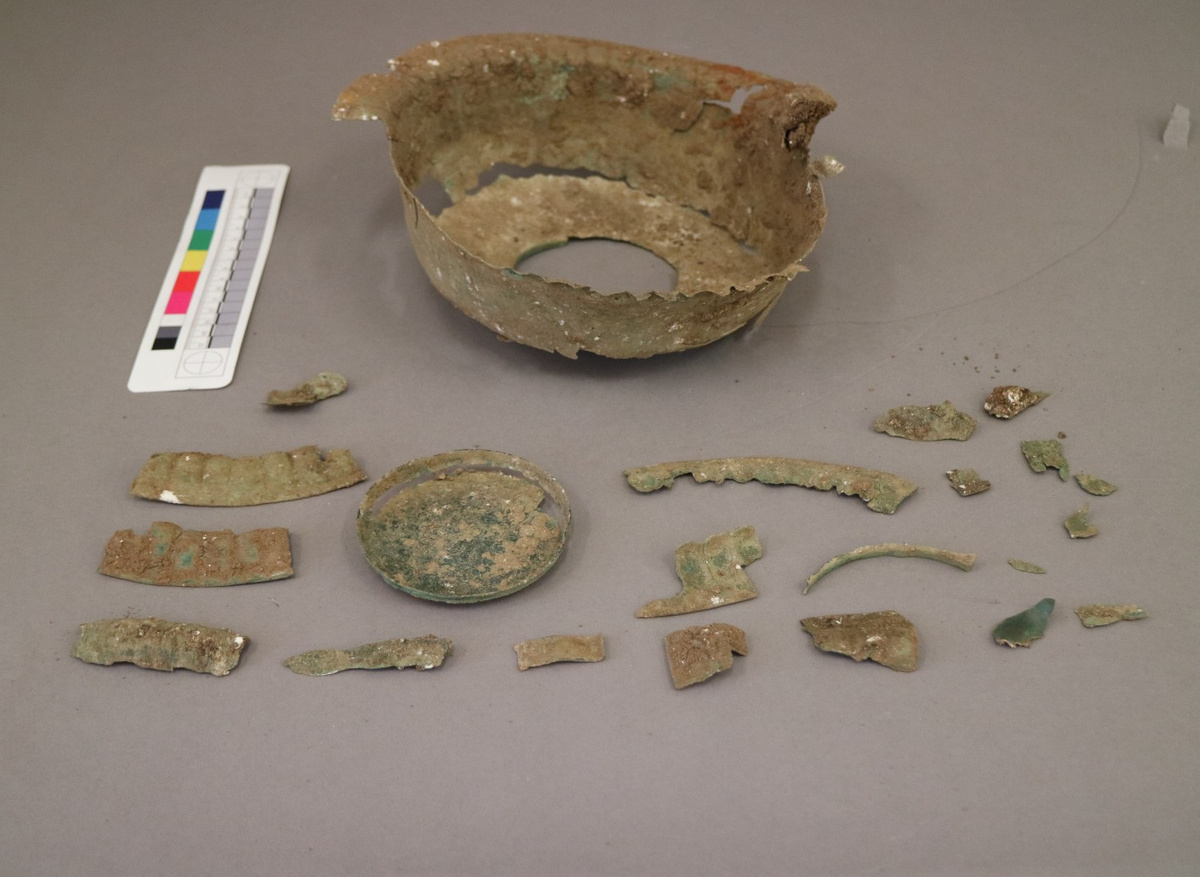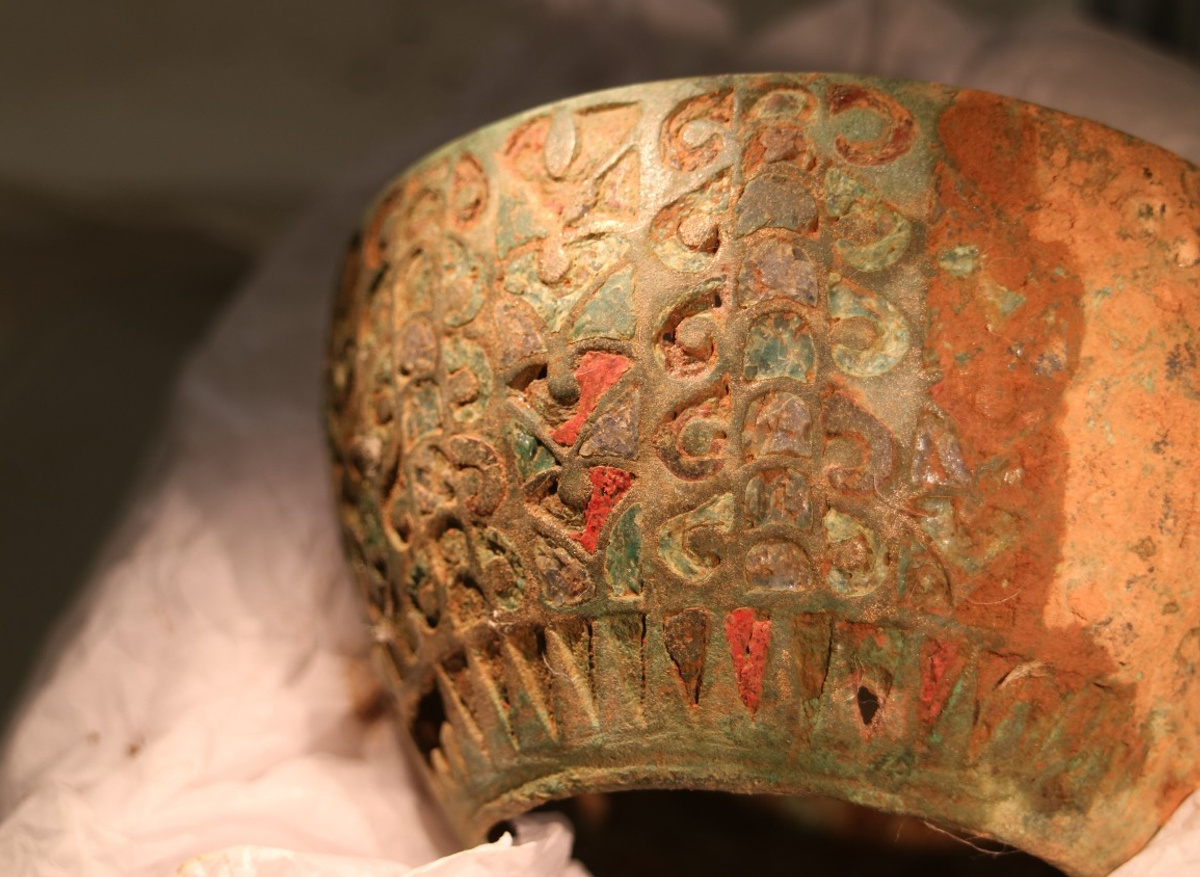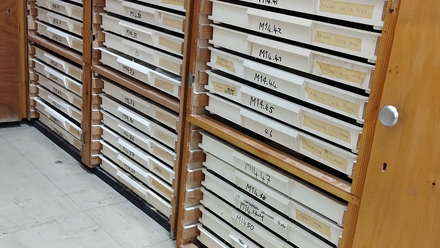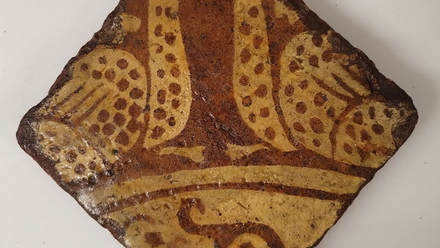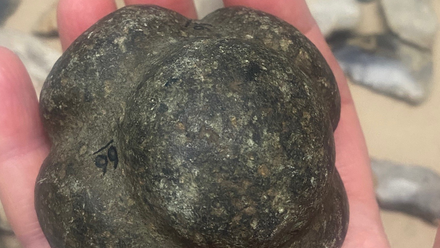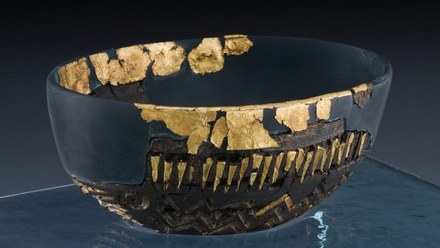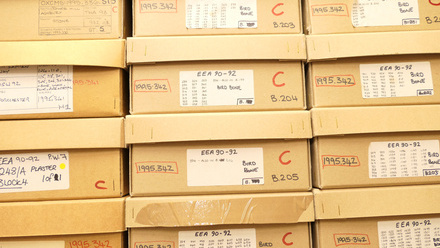Hi, my name is Pieta and I am an archaeological conservator, I work collaboratively with archaeologists, finds specialists, finds liaison officers, scientists and curators so we can learn more about the objects people used in the past.
So, what do I do...
I assess
The first thing I do is look at the object, each object is always different and presents different conservation needs, this is what makes my job so interesting and exciting as you never know what you will receive and what you will need to do to an object.
Two objects that look similar and are made from the same materials may need different treatments based on the level of corrosion and the soils attached.
These two silver coins come from the same hoard but they need different conservation treatments, one will require simple cleaning with a cotton swab and solvent to remove the soils and light corrosion products and one requires chemical cleaning to remove the heavily re-deposited copper alloy corrosion products.
Two silver Roman coins from the Second South Warwickshire Coin Hoard
I investigate
I investigate objects using x-rays and microscopes. These tools can provide lots of information about how what condition the object is in, how an object is made and what I need to do to conserve it.
When x-rayed you can see that this coin hoard is actually two different groups of coins (what would have been possibly two bags) and they have been stacked on one another, this tells us more about the objects when they were being deposited into the ground.
I also look out for materials that have been preserved by an object’s corrosion products or by the burial environment. Here is an Anglo-Saxon brooch that has a small piece of mineralised organic preserved. Although it’s very small, finds specialists will be able to study it to determine what it is made from (wool or linen) and what kind of garment it may have been.
I clean
Depending on the object and condition there are many different solvents and techniques that can be used to clean an object. Each conservation treatment is tailored to the object. Cleaning under the microscope is always best as you can see any small details and ensure that no scratches are added to an object during cleaning.
Copper alloy Roman coins before and after cleaning under microscope
This enamel cup underwent conservation for stability and to reveal its decorative surface, you can see more about the conservation of the scremby cup here
The Scremby cup during conservation
I re-join objects
Objects that have fragmented over time in the burial environment or have been accidentally damaged can sometimes be re-joined if the fragments are found.
This Anglo-Saxon vessel was found in several pieces by a metal detectorist and reported to the local Finds Liaison Officer, it has since been acquired by Bucks County Museum. After cleaning it was clear that the object would be in the best physical condition and easily viewable if it was re-joined. It took eight days of my time to get every fragment back into its original position. See the complete conservation process here
Being a conservator is a fun and exciting job, it mixes together science, technical hand skills and history to ensure that objects can be enjoyed and studied for as long as possible. We also share as much as we can, here is a little twitter paper about the Staffordshire Hoard you may also find interesting

